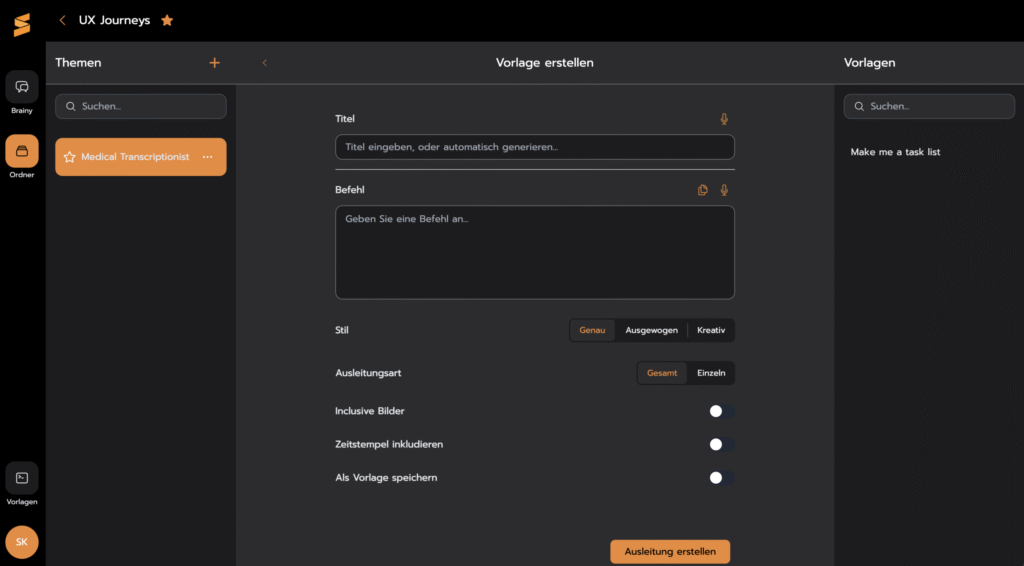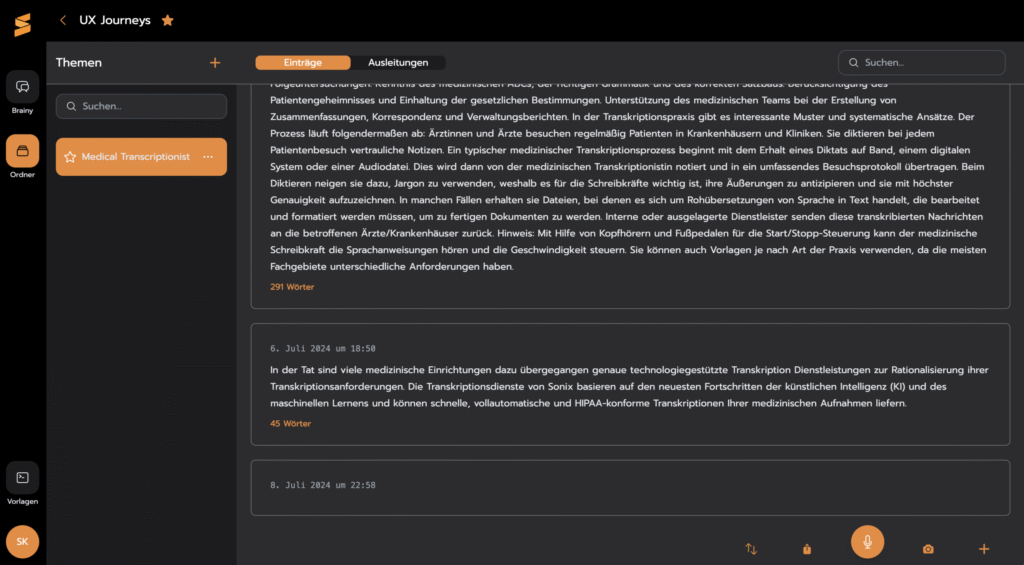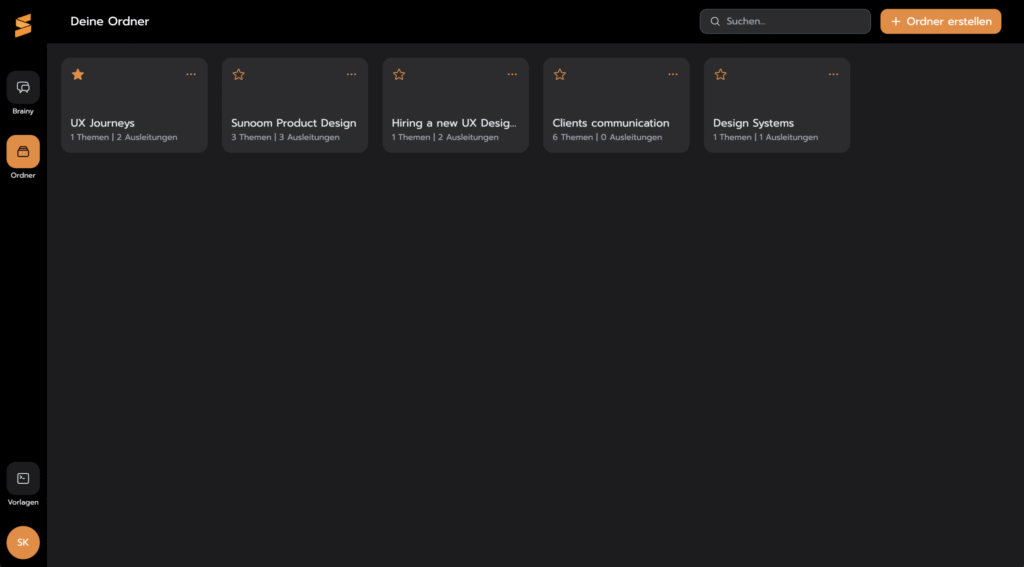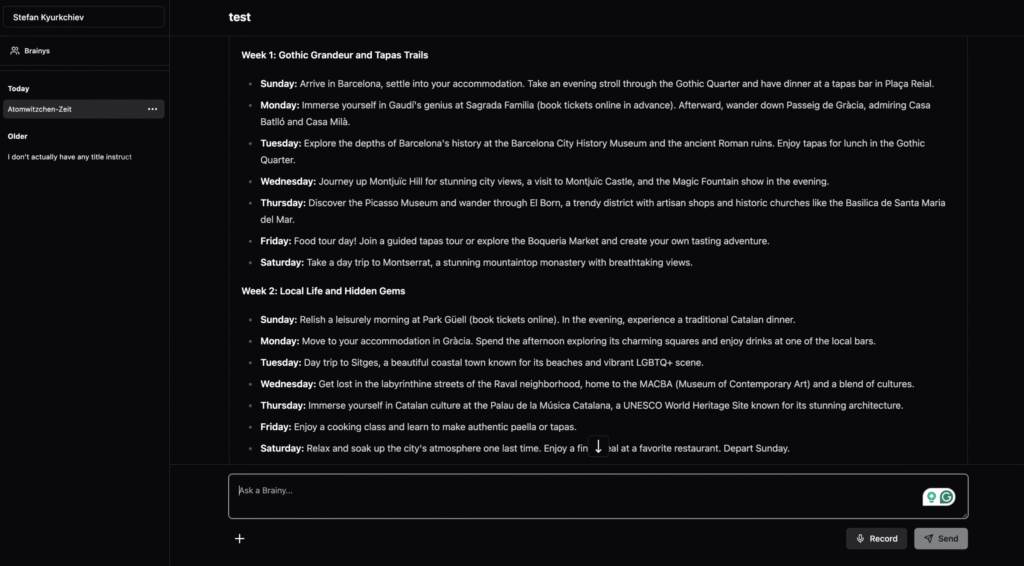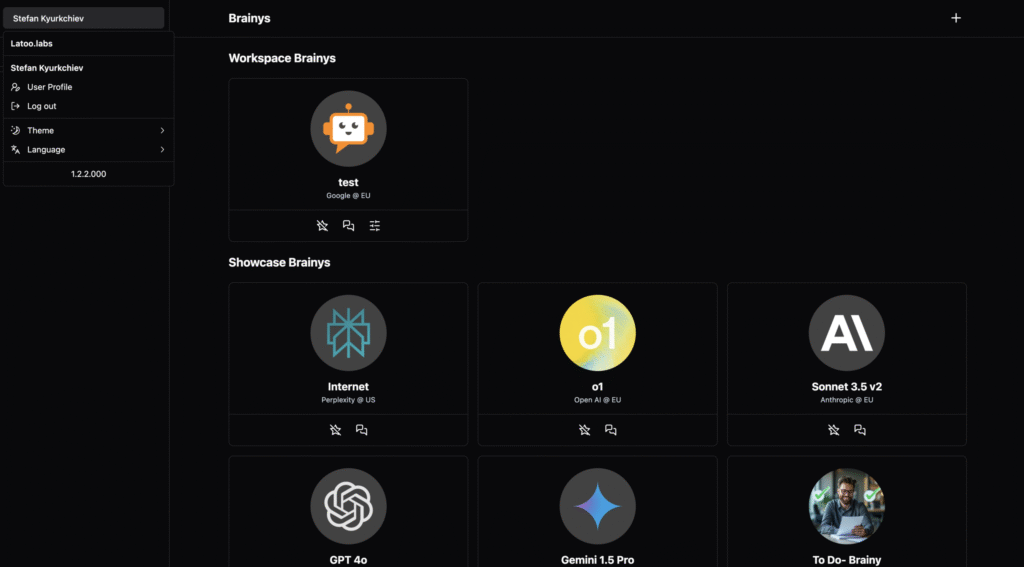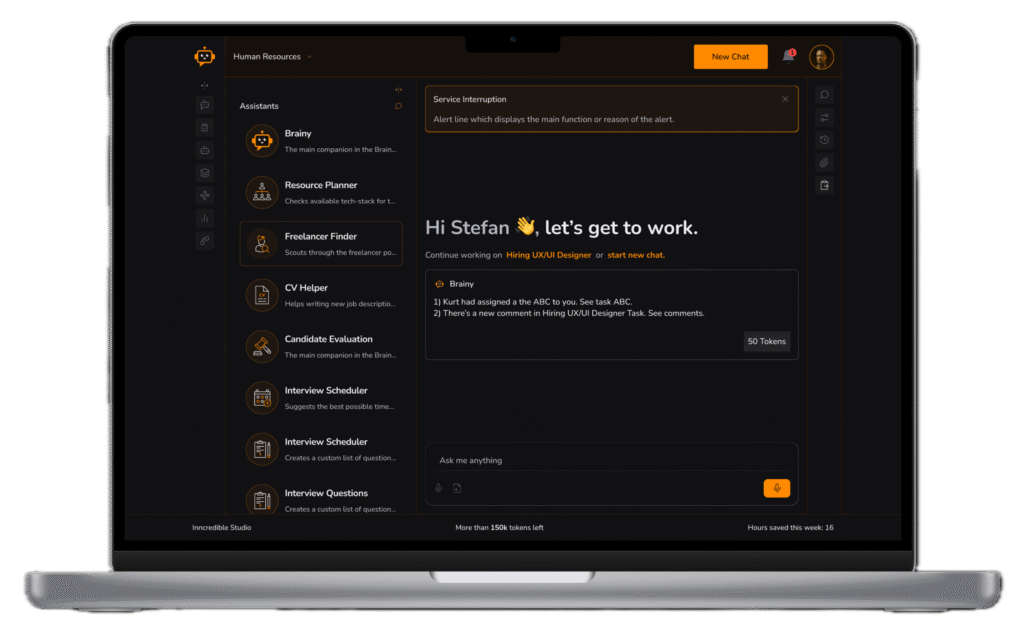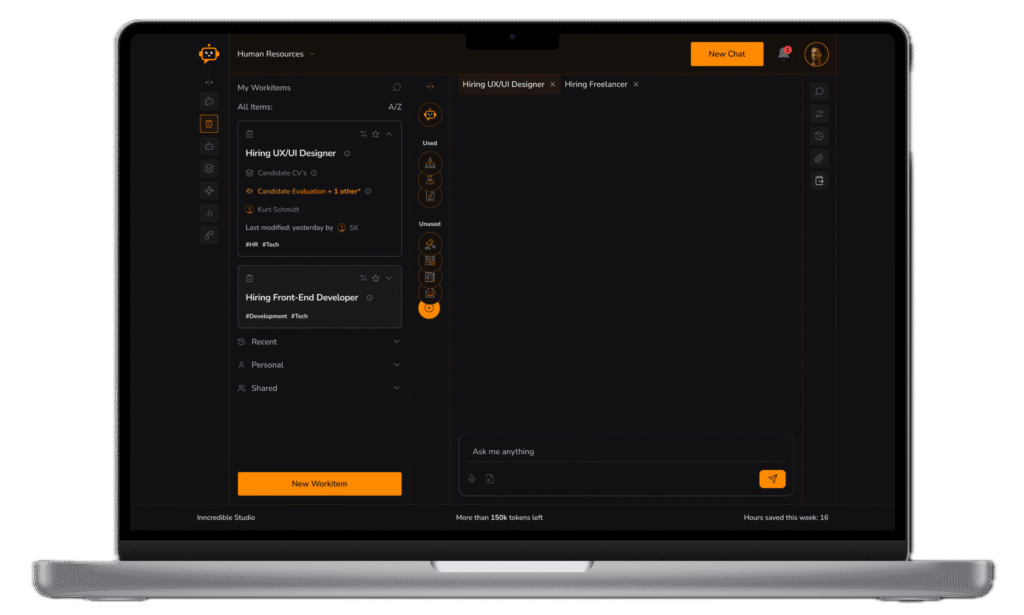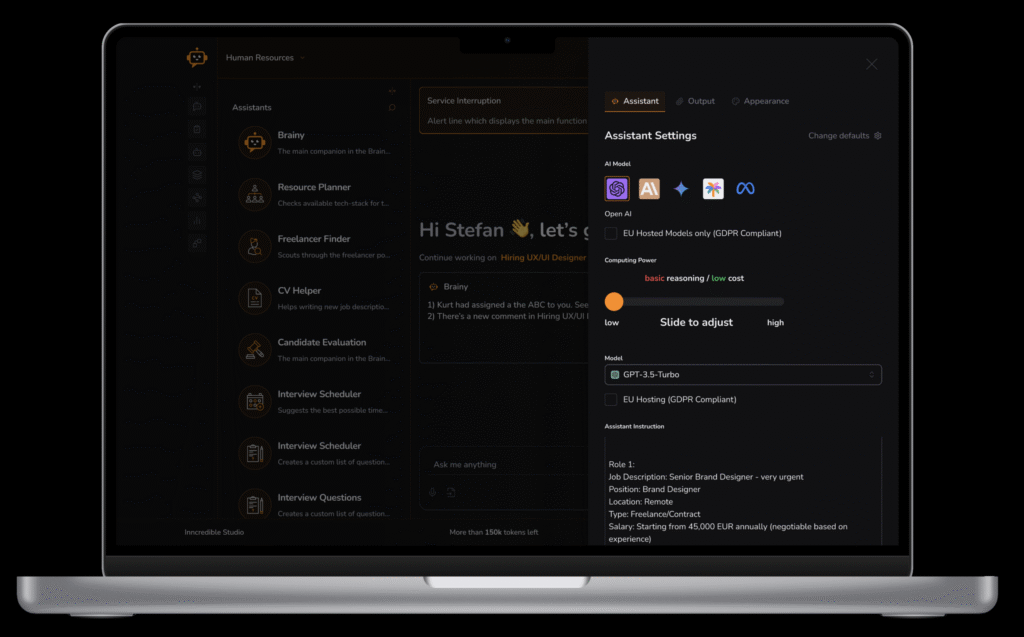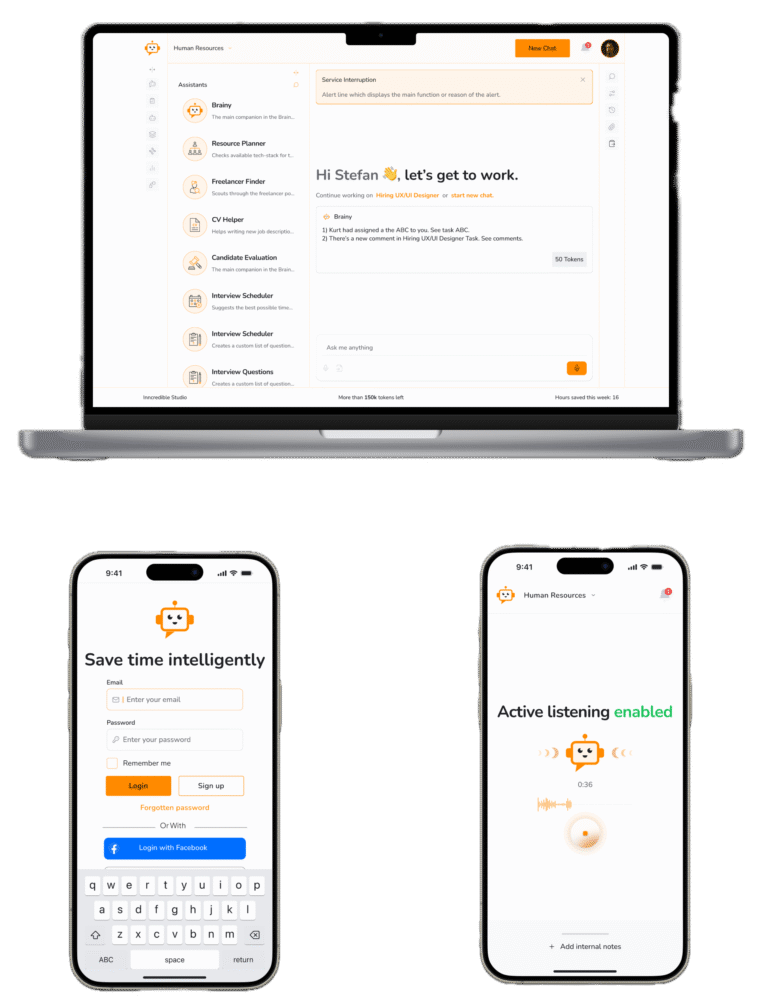End-to-end Research, Product Design, Design System
MVP to a finished product in less than 6 months
The startup Latoo Labs, reached out in pursuit of building an app that utilizes and combines different AI Models.
- Build MVP Version
- Gather Data
- Pitch decks for seed-funding
- Stage A funding concept
Everything had to be created from scratch – pitch decks, branding, product design & design system.

WHO: Latoo Labs & KINext
WHAT: End-to-end Research, Product Design, Design System
WHEN: 05/2024 – ongoing
Summary
Latoo Labs approached me with the ambition to leverage the latest advancements in AI technology to create a platform featuring custom assistants and cutting-edge models. Despite operating with limited resources, the project progressed from an MVP launched in January 2024 to a full-fledged app being implemented as of September 2024. The app caters to professionals like doctors, lawyers, marketing agencies, accountants, and assessors. Leveraging tools like ShadCN and React, the app now boasts 14 integrated AI models, workflows, and connectors, paving the way for future scalability, including white-labeling.
01
02
Problem Statement
Starting with an idea that arose from technological advancements – AI Models and features, we took a deep dive into unchartered territory of what’s possible in 2024. The trends were clear – AI is here to stay.
- Operating in uncharted territory with minimal resources.
- Started with a small team of three in January 2024.
- Needed to identify a clear target audience while gathering user feedback from the MVP.
- Faced challenges in attracting investors, building the app, and scaling operations simultaneously.
- Required a scalable design system and AI integrations to meet future demands.
v.1 Aphna Release
By April 2024 we came up with a MVP and released it for open-source usage.
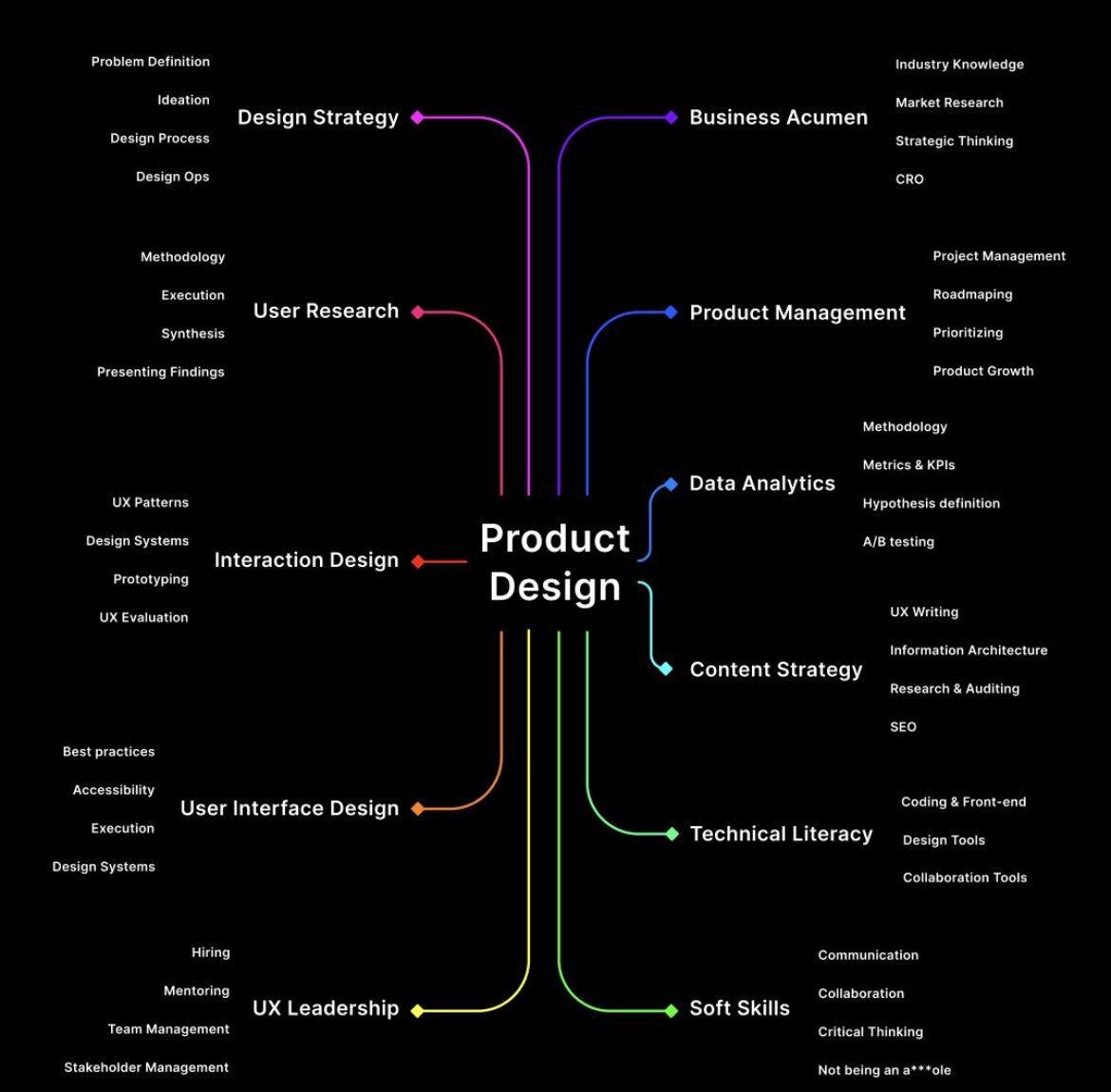
03
The Plan
- Develop an MVP leveraging OpenAI to gather user data and feedback.
- Identify trends and target user groups from collected data.
- Secure funding through branding, roadmaps, and pitch decks.
- Scale the app by redesigning with ShadCN-based design and React.
- Integrate AI models and third-party services like Zapier, calendars, and CRMs.
- Prepare the app for future whitelabeling to meet diverse client needs.
User Research
We launched an OpenAI-powered MVP and collected data to determine usage patterns and sentiments. By April 2024, we identified the primary user groups:
- Doctors
- Lawyers
- Marketing Agencies
- Accountants
- Assessors (construction, cars, insurance)
Additionally, we got our first enterprise client that required us to plan not only B2C solution, but also B2B one.
04
Roadmap
Following user research, we identified the following priority features for development:
UI Enhancements
- Whitelabeling: Enable branding customization for various industries.
- Easier Onboarding: Simplify user registration and app setup for different professional roles.
- Mobile App: Launch a mobile-friendly version for accessibility on the go.
Functionality Upgrades
- More AI Models: Expand the app’s AI capabilities for diverse use cases.
- Data Storage: Offer secure and scalable storage for users’ files and workflows.
- External Integrations: Support tools like Zapier, email, calendars, CRMs, and custom APIs for workflow automation.
- Community with Templates: Build a collaborative space for users to share and leverage prebuilt templates.
- Workplaces: Introduce team and company-specific features for collaboration and management.
05
Step 1: MVP Transition to ShadCN & Tailwind CSS
Step 2: The plan for 2025

Let’s create something great together.



